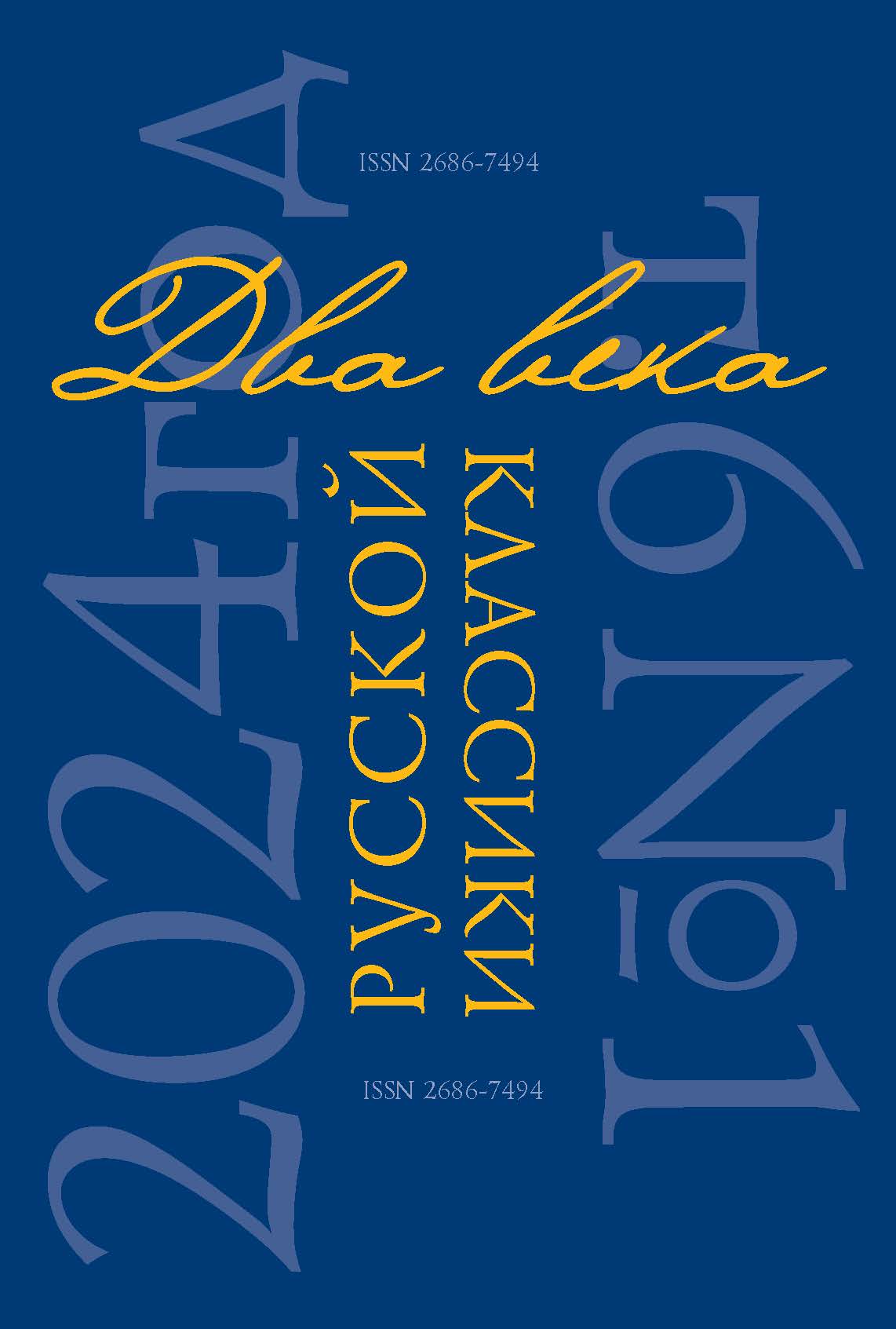Abstract: The article is dedicated to making sense of Leo Tolstoy’s work on images of the characters of the short story “Master and Man”, to analytical study of the conceptual changes made to the text by the writer. Characterising the short story’s style, the author of the article states that bright oppositions, presence of clear assessments of characters’ behavior, moral and ethical guidelines make Leo Tolstoy’s narrative somewhat parable-like, while artistic images in such a “parable” narrative are expressive. Main elements of the plot are already present in the first draft edition of the short story, but there is still lack of the heroes’ characters integrity in it. Leo Tolstoy’s work on the short story went in two directions. First, the writer paid much attention to the finale, carefully thinking through descriptions of the characters’ inner monologues and states of mind; to Vasily Brekhunov’s awareness of his former life’s falseness and illusory. Events of Vasily Andreyevich’s sudden clarification, and him saving Nikita are both presented psychologically accurately and convincing; the writer reveals the fundamental change that took place in the consciousness of Vasily Brekhunov, but the hero’s character, the way of his behaviour remain the same. Second, the writer carefully thought through all the slightest components of pictorial, seeking to create holistic and consistent images of the characters. Leo Tolstoy assessed the depth of their opposition, removed details that could distract the reader from the central idea of the short story, whereas some secondary motifs and descriptions were transformated into artistic details by him.
References
Andreeva V. G. O neskol'kikh tsentral'nykh antitezakh v romane L. N. Tolstogo “Voskresenie” [On some central antitheses in the novel Resurrection by Leo Tolstoy]. Vestnik Kostromskogo gosudarstvennogo universiteta im. N. A. Nekrasova [Vestnik of Nekrasov Kostroma State University], 2012, № 4, pp. 114–117. (In Russ.)
Luchenetskaia-Burdina I. Iu., Terent'eva N. S. Khudozhestvennoe voploshchenie etiko-religioznykh idei v rasskaze L. N. Tolstogo “Khoziain i rabotnik” [Artistic expression of ethical and religious ideas in the short story “Master and Man” by Leo Tolstoy]. Verkhnevolzhskii filologicheskii vestnik [Verhnevolzhski philological bulletin], 2016, № 4, pp. 23–26. (In Russ.)
Nagina K. A., Kukhtina N. I. Snovideniia v rasskaze L. N. Tolstogo “Khoziain i rabotnik”: ot zhizni «dlia sebia» k zhizni “dlia drugikh” [Dreams in L. N. Tolstoy’s Short Story “Master and Man”: from “life for yourself” to “life for others”]. Vestnik severo-vostochnogo federal'nogo universiteta im. M. K. Ammosova [Vestnik of M. K. Ammosov North-Eastern Federal University], 2019, № 3, pp. 100–110. (In Russ.)
Opul'skaia L. D. Lev Nikolaevich Tolstoi. Materialy k biografii s 1892 po 1899 g [Lev Nikolaevich Tolstoy. Materials for biography from 1892 to 1899]. Moscow, 1998, 405 p. (In Russ.)
Petrovskii A. S. Kommentarii k rasskazu “Khoziain i rabotnik” [Comments on the story “Master and Man”]. Tolstoi L. N. Poln. sobr. soch.: v 90 t [Full collection of works in 90 vol.]. Moscow: Khud. lit. Publ, 1954, Vol. 29, pp. 375–380. (In Russ.)
Poltavets E. Iu. Rasskaz L. N. Tolstogo “Khoziain i rabotnik” kak khudozhestvennaia ekzegeza [Exegetical Method in L. Tolstoy’s Story “Master and Man”]. Rusistika i komparativistika [Russian philology and komparativistika]. Moscow, 2012, pp. 116–131. (In Russ.)
Ranchin A. M. Chernobyl'nik: ob odnom simvole v rasskaze Tolstogo «Khoziain i rabotnik» [Wormwood: About one symbol in the short story "Master and Man" by Leo Tolstoy]. Literaturovedcheskii zhurnal [Literary journal], 2010, № 27. pp. 97–107. (In Russ.)
Tolstoi L. N. Poln. sobr. soch.: v 90 t. [Full collection of works in 90 vol.]. Moscow: Khud. lit. Publ , 1928–1958. (In Russ.)
Fomina Iu. V. Telo i dukh v povesti L. Tolstogo “Khoziain i rabotnik” [Body and spirit in the novel of l. Tolstoy “Master and Man”]. Vestnik Udmurtskogo universiteta [Bulletin of Udmurt University. History and Philology Series], 2015, № 5, pp. 130–134. (In Russ.)









